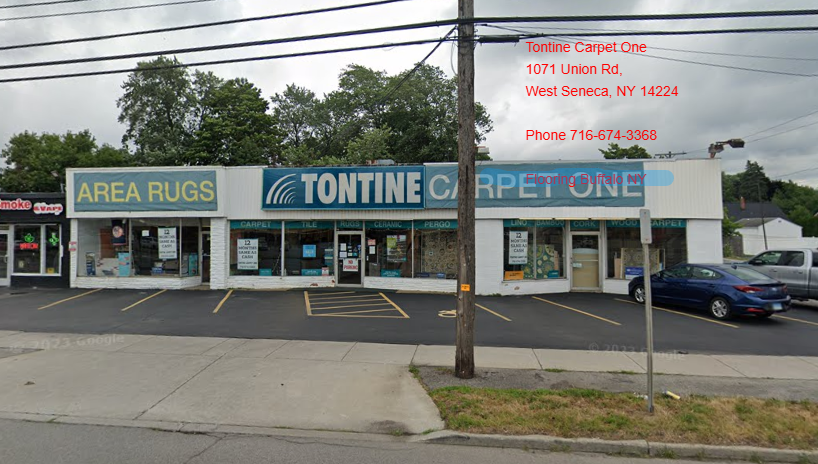Introduction
When we walk with the aid of a superbly adorned residence, our eyes incessantly fall upon the carpeting that serves as either a origin and a announcement piece. Carpets can lift spaces, presenting warmness, consolation, and an aesthetic appeal. But have you ever ever wondered how carpet types advanced over time? From luxury Persian rugs to fashionable minimalist designs, the journey of carpeting types reflects societal modifications, technological advancements, and evolving tastes.
In this newsletter, we’ll discover The Evolution of Carpeting Styles Over the Years in detail. We'll delve into historic context, parts used, design traits, and existing techniques in the carpet market. Whether you might be in search of carpets Buffalo NY, Hardwood Flooring Buffalo NY, or absolutely exploring innovations at your neighborhood Buffalo Carpet Store, this article will present insights into how carpets have changed through the years.
The Evolution of Carpeting Styles Over the Years
A Brief History of Carpeting
Carpeting has a rich historical past relationship returned hundreds of years. http://dominickrpgh713.almoheet-travel.com/making-an-entrance-choosing-the-right-entryway-rugs Initially created for useful reasons, carpets advanced into decorative paintings varieties that reflected cultural values and concepts.
Early Beginnings: The Origin of Rugs
- Persian Influence: Persian rugs are most of the oldest ordinary carpets, dating lower back to round 500 BC. Their intricate designs incessantly function floral motifs and geometric styles. Navajo Weaving: In North America, Native American tribes just like the Navajo started out weaving their personal assorted rugs as early as the seventeenth century.
These early carpets had been no longer only practical but additionally served as status symbols inside their respective cultures.
The Middle Ages: A Shift in Functionality
As societies developed at some stage in the Middle Ages, carpets transitioned from being purely utilitarian to serving as decorative materials in castles and church buildings across Europe. The use of wealthy hues and complex designs become popular.
Renaissance to Industrial Revolution: The Rise of Luxury Carpets
Renaissance Flourishes
During the Renaissance era (14th to 17th centuries), European royalty commissioned extremely good tapestries and carpets for their homes. These textiles featured shiny colorations and depicted scenes from mythology or nature.

Industrial Innovations
The Industrial Revolution inside the 18th century marked a massive turning level for carpeting styles:
- Mass Production: With improvements in equipment, carpets could be produced on a larger scale. Synthetic Fibers: The introduction of man made fibers bought sturdiness at slash costs.
twentieth Century: Diverse Styles Emerge
As we entered the twentieth century, carpeting commenced to diversify in addition:
Mid-Century Modern Designs
The mid-century modern circulation emphasised simplicity and capability. Carpets reminiscent of shag rugs grew to be well known using their textural traits.
Post-War Era Trends
After World War II, there was a surge in suburban residing which prompted carpet design:
- Wall-to-wall carpeting become a staple in lots of residences. Bright hues like avocado efficient and mustard yellow contemplated established culture at some stage in this period.
Contemporary Trends: Sustainable Practices and Technology
Today’s carpets replicate modern-day tradition possible choices with an emphasis on sustainability and technologies:
Eco-Friendly Materials
Many customers are actually looking sustainable thoughts manufactured from recycled supplies or organic and natural fibers. This shift is obvious at native floors stores like Tontine Carpet One Buffalo NY.
Technological Advancements
Innovations such as stain-resistant therapies and advanced setting up processes have made retaining carpets simpler than ever sooner than.
Materials Used in Carpet Making Through Time
Natural vs Synthetic Fibers: A Comparative Analysis
When discussing carpet constituents over time, it’s a must have to think equally common and manufactured fibers:
| Material Type | Characteristics | Advantages | Disadvantages | |-------------------|-----------------------------------------------------|-----------------------------------------|-------------------------------------| | Natural Fibers | Wool, cotton, jute | Eco-pleasant; sumptuous suppose | Can be luxurious | | Synthetic Fibers | Nylon, polyester | Durable; stain-resistant | Less breathable |
Wool: The Classic Choice
Wool has been revered for its toughness and costly texture all the way through records. It retains warmness properly and is clearly resistant to dirt.
Nylon: A Modern Marvel
Introduced in the mid-twentieth century, nylon soon grew to be widely wide-spread through its resilience towards put on and tear—fabulous for excessive-traffic areas like hallways or dwelling rooms.
Design Trends Across Different Eras
Victorian Patterns: Opulence Redefined
In Victorian occasions (19th century), ornate patterns ruled carpet designs with floral motifs reflecting wealth.
Art Deco Inspirations
Art Deco (1920s) delivered geometric shapes into cognizance—providing formidable contrasts that still resonate in these days.
Influence of Culture on Carpet Design
Cultural Significance
Every culture has its original contribution to carpet making—from Persian motifs celebrating nature to Navajo styles reflecting storytelling.
Regional Styles
Each vicinity showcases numerous features primarily based on accessible fabrics or classic processes—believe Turkish kilims versus Indian dhurries!
FAQs
1. What are some generic types of carpeting?
There are plenty of versions consisting of loop pile, minimize pile (like plush), frieze (twisted), Berber (looped & textured). Each presents totally different aesthetics & convenience stages!
2. How do I decide upon a carpet established on way of life?
Consider points including foot traffic tiers! For busy families with pets/youth prefer sturdy preferences like nylon or Berber kinds that face up to stains!

3. Are eco-friendly carpets well worth it?
Absolutely! They now not basically contribute in opposition to sustainability yet can even supply more beneficial air fine advantages! Many eco-friendly manufacturers now have stylish offerings too!
four. How incessantly needs to I exchange my carpet?
Typically each five-10 years depending on utilization & renovation! Regular cleansing can enlarge its life vastly!
5. What’s trending accurate now in carpeting patterns?
Current developments emphasize textures—suppose shaggy seems to be paired with impartial shades! Also multi-simple quarter rugs are particularly admired!
6. Can I deploy carpet myself?
While DIY setting up is achievable specially with modular tiles; official installing ensures ideal effects distinctly for wall-to-wall fittings!
Conclusion
As we mirror on The Evolution of Carpeting Styles Over the Years, that's clear that those humble textiles tell testimonies a ways past aesthetics—they encapsulate cultural identities when adapting with time's currents! Whether you’re traveling your native Buffalo Carpet Store or finding out between techniques at Tontine Carpet One Buffalo NY; figuring out this evolution enhances appreciation on your selections these days!
From natural and organic fibers steeped in custom to brand new manufactured ideas; our reference to floor remains profound! So next time you walk across your plush living room carpet remember—it’s more than just fabrics underfoot—it’s history woven into each and every thread!